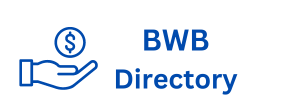As we have already explained, a family genogram is a graphical tool that visually represents the structure and dynamics of a family over several generations. Similar to a family tree, the genogram shows family relationships, including marriages, divorces, births, deaths, and other significant events.
However, unlike a traditional family tree, the genogram also incorporates emotional and psychological information.
This technique uses symbols and relationship lines on the genogram to represent different types of relationships and family characteristics. This is a valuable tool in family therapy as it helps to identify patterns, conflicts and recurring issues that may influence family dynamics.
It also provides a deeper understanding of family history, intergenerational influences, and factors that
may affect the health and well-being
How to make a family genogram?
Creating a genogram involves gathering detailed information about your family background , such as names, birth and death dates, relationships, occupations, and medical history. This is done by interviewing family members or how to build telemarketing lead researching family records. Here is a list of steps to creating a family genogram .
Gather information. Obtain detailed data about your family, such as names, birth and death dates, family relationships, occupations, and medical histories. You can conduct interviews with family members or research family records.
Select ផលប៉ះពាល់នៃស្លាកសញ្ញាល្អនៅលើម៉ាក: គន្លឹះពីទីផ្សារ a template. Choose a genogram template or draw your own diagram on paper or using specialized software. Make sure you have enough space to include all the necessary information.
I
dentify symbols. Familiarize yourself with common symbols used in genograms to represent different aspects of your family, such as gender, marriage, divorce, children, siblings, deaths, health issues, addictions, and other relevant events.
Make sure you understand the meaning of each symbol
Start with the oldest generation. Start the genogram with the oldest generation in the family and move to the younger generations. List the names of family members and use symbols and lines to represent relationships and events.
Add additional information. As you complete your genogram, include additional information such as occupations, geographic locations, relevant aob directory events, and personality or behavioral traits.
Identify patterns and trends. Notice the patterns and connections that emerge as you complete the genogram. You may notice recurring health problems, family conflicts, or common traits among family members.
Analyze and share the genogram. Once you have completed the genogram, take time to analyze and reflect on the information you have gathered. Share the genogram with other family members or health care professionals if it is relevant to therapy or genealogical research.
Remember that the genogram is a flexible and customizable tool, so you can adapt it to your needs and add any other information relevant to your family.



